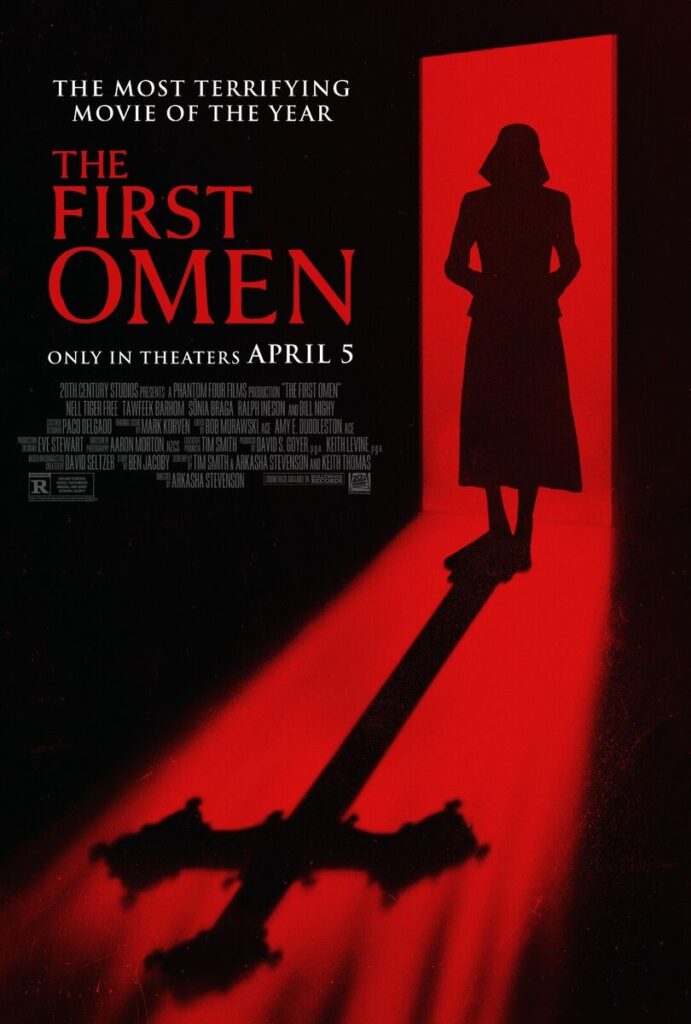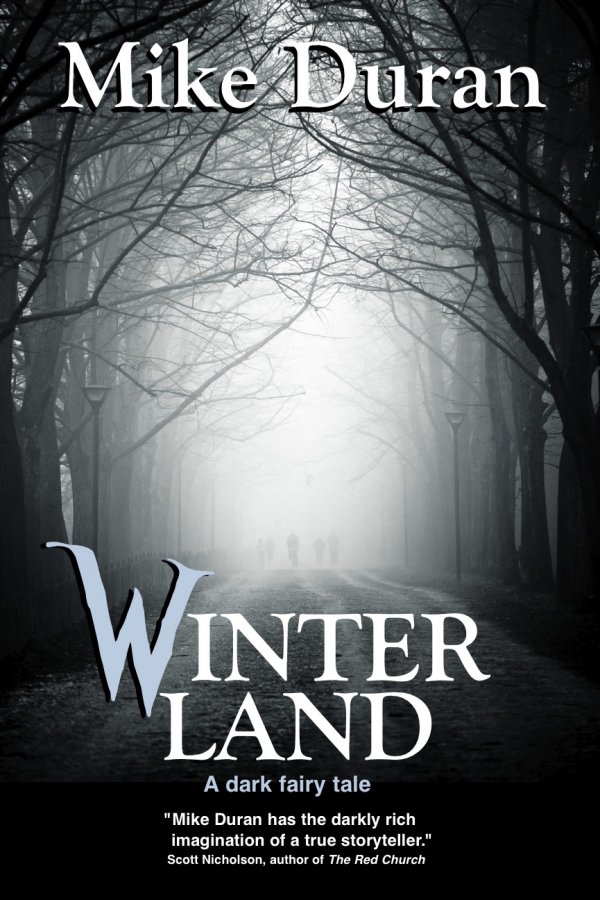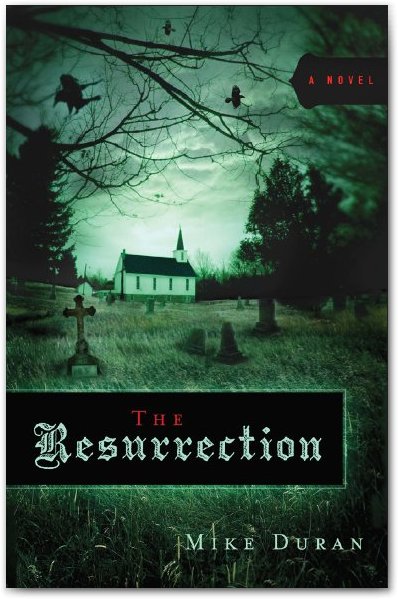Religion continues to be a prevalent thematic element of many contemporary horror films. 2024 was no exception. There are many possible reasons for the intersection of horror and religion, which I discuss at length in my book Christian Horror: On the Compatibility of a Biblical Worldview and the Horror Genre. Exploring existence and the human condition through confrontations with good and evil, heaven and hell, the afterlife and terrors of the unknown, are all components of the horror genre. Religious horror explores our age-old fears of death and the unexplained, while forcing us to grapple with the demonic and the divine. These are just a few reasons why religion and horror are inseparable companions.
Likewise, 2024’s cinematic horror canon was replete with representations of religion and religious themes. As one would expect, not all these iterations are favorable. The institutional Church and its cronies are perennial villains throughout film history. Nevertheless, the iconography and moral framework shaped by our inherently religious Western worldview, serves as a reminder of the place religion and Judeo-Christian themes hold in our storytelling and collective psyche.
That said, here’s a few of the notable horror films that incorporated religion, in some form, into their narrative vision.

The First Omen — A surprisingly good prequel to the long-running franchise (which began in 1976) tracing the birth of the Antichrist. (In Christian eschatology, the Antichrist is a powerful world leader who will arise during the end times and attempt to steer the world away from Christ before His Second Coming.) The First Omen takes us back to the child’s inception within a creepy Italian orphanage / nunnery. (Interestingly, this isn’t the only creepy Italian nunnery to make the list.) Margaret, the young, naive nun-in-training, befriends Carlita, a mistreated orphan who suffers disturbing visions. Bad things follow Carlita as Margaret learns the young woman is being groomed for something sinister. Apparently, high-ranking clerics within the church, desperate to regain power against a growing secularism, seek to orchestrate the birth of the Antichrist in hopes of creating fear and driving people back to the Church. Carlita is intended to be the Beast’s mother. One reviewer at Dread Central calls The First Omen The Perfect Religious Horror Film. While the film isn’t “perfect,” (at the least, it’s theologically muddled), it effectively employs many common religious horror tropes. Biblical references to the Antichrist, and his number (666), punctuate the many bad things which happen to those who dare cross the Devil’s spawn.
Exhuma — This South Korean horror film combines elements of Eastern folk religion, Western Christianity, and shamanism in a tale about grave exhumation and the breaking of generational curses. The central story surrounds two shamans, a funeral director, and a geomancer, all of whom have different backgrounds and views on death. (The funeral director, in particular, is a vocal Christian who studies the Bible, prays, and quotes Scripture.) The plot revolves around disturbing and confronting a vengeful, ancestral spirit. But how they protags accomplish this is a varied palette of religious mysticism and ritual. One film review site describes Exhuma as “a uniquely South Korean film that combines elements of folklore, shamanism, Christianity, and cultural superstitions into a weird, twisting, chilling ghost story.” Unlike many Western films, all these varied religious elements are treated respectfully. Though rooted in an Eastern worldview, Exhuma still invokes a non-materialistic view of a world filled with spirits and ancestral curses, a world where prayer and religious ritual still hold power. For example, during their climactic clash with the final deity, the Christian funeral director quotes the Bible saying, “One person may be defeated, but two people can put up a fight. A threefold rope is not easily broken. Ecclesiastes 4:12.” While extremely atmospheric, containing wonderful cinematography and pacing, I found the film quite chilling and extremely well done.
The Devil’s Bath — Though categorized as horror, this film is more properly labeled as “dark history” (if there is such a genre). While there are no supernatural elements, the film is incredibly bleak. The Devil’s Bath is a German film based on the book Suicide by Proxy in Early Modern Germany: Crime, Sin and Salvation. The film traces the events leading up to the criminal trial of Agnes Catherina Schickin who was sentenced to death for murdering a child. Agnes engaged in the practice of “suicide by proxy,” an unusual crime that was novel to the seventeenth and eighteenth centuries in German-speaking Central Europe and Scandinavia. The act allowed one who desired suicide to suffer death and still go to heaven. We see this in the opening sequence of the film where a distraught mother kills her child, confesses her sin to the parish priest, is resolved, before being executed for her crime. Agnes is an extremely devout individual, regularly saying prayer and performing rituals. While she deeply wants a child, her new husband repeatedly rebuffs her attempts. Furthermore, her extremely demanding mother-in-law, combined with harsh domestic demands, loneliness, and isolation, eventually drive Agnes insane. As she spirals into despair, Agnes plots “suicide by proxy.” She will commit a crime punishable by murder, confess her sin before execution, therefore guaranteeing heaven. The Devil’s Bath is a bleak reminder of the harsh historical elements and superstitions surrounding medieval religion. For example, in the film a broken candle is said to indicate a bad future, keeping a horseshoe upright brings luck, and a severed finger assists in fertility. The film reminds us that living under such primal fears and mythology, not to mention the unrelenting expectations often placed upon wives and mothers, is its own type of horror.
Heretic — Though not “faith friendly,” this horror film is unapologetically about religion. The antagonist is an atheist intellect (played deliciously by Hugh Grant) who imprisons two female Mormon missionaries in a psychological game of religious cat-and-mouse. Grant’s character definitely has the edge on anti-religious volleys. But while his critiques are initially aimed at Mormonism, which the girls do a fairly meager job of defending, we soon learn that the antag has much bigger fish to fry. Namely, he hates all religions. Though the “sisters” have a few good retorts and, eventually, rise to meet their captor’s intellectual parries, the third act is where the real horrors begin, becoming more metaphorical (and bombastic) in their unfolding. Sadly, the religious messaging falls rather short, with the film’s final sequences undermining a more positive portrayal of religion / religious. Nevertheless, the heroines, though naive and well-meaning, are portrayed in a sympathetic light. Furthermore, framing the antagonist as an atheist was rather refreshing. Even HE is forced to admit the logical consequences of his beliefs — in a godless world, ethics are foundationless. In that, we are compelled to root for the simple believers, a refreshing twist. The conclusion of Heretic is ambiguous, which was disappointing. Is there a God, or not? Can faith stand up under intellectual interrogation? Is all religion just about control? Though the film lends significant time to actual religious discussion, it doesn’t proffer a whole lot of answers.
The Deliverance — This Netflix film is another openly religious horror film. Directed and co-written by Lee Daniels (“The Butler” and “Precious”), the film claims to be inspired by true events, specifically the alleged haunting of a family that took place in Gary, Ind., in 2011. Apparently, that possession story is quite well documented. However, the reportage is ambiguous as medical / law enforcement personnel seem to corroborate claims of paranormal phenomenon. However, Child Protective Services also cite possible abuse and psychological issues. Daniels states that his interest in the tale surrounded being able to show an exorcism story through the eyes of a black woman, as well as his need to reconnect to his “higher power.” The film contains very explicit Christian concepts and statements. An exorcism is conducted, Scripture is quoted, and Christ is repeatedly referenced. Nevertheless, the film is rated R for language (lotsa f-bombs) and horror elements. While I was intrigued by the first half of the story, things quickly unraveled. Early on, the supernatural elements are portrayed as more psychological. But by the second act, growling and levitating emerges, and the story devolves into poorly executed horror tropes. (The film currently sits at 34% at Rotten Tomatoes.) Interestingly, some have referred to The Deliverance as an “evangelistic Christian horror movie.” While the film definitely contains some explicit Gospel references, the raw language will likely turn many Christian viewers off. If anything, The Deliverance is a reminder that exorcism remains a mainstay in the horror genre. But while the bold proclamations of Christ and Scripture quotations should be applauded, the film’s predictable, over-the-top execution potentially undermines any redeemable plot lines.
Immaculate — Like The First Omen, Immaculate locates its story in an Italian convent, with its protag, Cecilia, a young devout nun. But as with the aforementioned film, the convent and its residents harbor lots of secrets and scoundrels. After having nightmares of creepy hooded figures, Cecilia shockingly learns that she is pregnant… despite being a virgin. Yet the convent’s inhabitants, rather inextricably, view the phenomenon as a miracle and immediately treat Cecilia as the next Virgin Mary. Immaculate is inferior to The First Omen in many respects. Nevertheless, both films appeal to an anti-Catholic sentiment prevalent in many horror films. Hidden ecclesiological corruption proffered by powerful clerics and Bible-spewing henchmen (and women) are common tropes in this genre. Sadly, said caricatures are replete in Immaculate. Perhaps the best example is that of the rogue priest who’s using DNA samples from a religious relic to impregnate nuns and, hopefully, usher in a new messiah. Why do we need another Messiah, you ask? Well, apparently, the First One failed and needs some assistance. Further tainting the film’s portrayal of faith / religion, is Cecilia’s eventually rejection of her former beliefs, and the corrupt Church she was betrothed to. (Leading some to label this new trend as “nunspolitation” — novice nuns as victims of deception and abuse from a power-hungry Church.) On one hand, films which employ religious iconography often manage to still engage larger spiritual issues of faith, the afterlife, or redemption. Sadly, between Immaculate’s misguided theology and church bashing, little positive remains.

Azrael — This post-apocalyptic story takes place many years after the Rapture. Like the Antichrist, the rapture is another eschatological theme imported from religion into the horror genre. In Azrael, the remaining human survivors are hunted by the Burned Ones, humanoid creatures who are drawn to and feast upon human flesh and blood. Azrael, the protag, is driven from a forest-dwelling cult who believes that speech is a sin, and have surgically removed their own vocal cords. As a result, the film has very little dialog. After a failed attempt to sacrifice her to the Burned Ones, Azrael flees before infiltrating another camp where she encounters a makeshift church led by Miriam. After being found out, Azrael goes rogue, killing cultists and Burned Ones alike. Though the name “Azrael” has many historic meanings, in Islamic beliefs, Azrael was the only angel brave enough to come to Earth and fight the evil hordes on God’s behalf. Likewise, Azrael takes vengeance upon both cultists and the humanoid creatures they seek to appease. However, it’s the film’s climactic conclusion that makes this an important entry into the “religious horror” category. Spoiler: For here we learn that Miriam has given birth to the Antichrist. As Azrael hoists this hooved figure into the sky, the Burned Ones enter the church in order to worship the Man of Sin. Azrael’s apparent homage to the Antichrist flips the narrative on its head. But it’s this reference and the startling revelation of the protag, that make this an unusual entry. For not only are eschatological themes incorporated, but the ultimate Evil, the Antichrist, is summoned. Only in this tale, Azrael is not on the side of Good.
Nosferatu — Robert Eggers’ long awaited remake of the 1922 silent film is, like most vampire-related narratives, packed with religious themes and iconography. While Stoker’s Dracula contains numerous explicit references to Scripture and the Christian faith, Egger’s iteration of the original is more of a mixed bag. Count Orlok, the antagonist and Dracula stand-in, is unquestionably the Bad Guy. We’re told he was a “black enchanter” in life, having made a pact with the devil. Unlike the glittery Twilight bad boys or the affable socialites of the Anne Rice novels, Orlok is a manifestation of spiritual evil. He is a foul menagerie. His crypt is adorned with occult symbols. He is referenced as the devil himself. And because of this, he must be fought by spiritual means. Although Eggers sprinkles occultism, superstition, and fable along the way, when it comes to contending against Orlok, the approach is decidedly ‘Christian.’ For example, one protagonist’s life is saved in the Carpathians through the intercessory prayers and care of Orthodox nuns. They reassure him that he’s safe as long as he stays at the church, as Orlok’s evil “cannot enter this house of God.” The same man is told that he was divinely protected, and that faith remains his best defense. “Trust in God and your strength,” he is exhorted. References to Scripture and the invocation of angels from Christian and Jewish tradition are made, as are mentions of God’s grace and providence. One interesting twist has to do with science, and how it is viewed as a hindrance, not a help, to battling such undead evils. In fact, at one point Orlok leverages mankind’s growing trust in science as an aid to the implementation of his plan. While the film is beautifully shot, it includes nudity and gore. Nevertheless, in an age where Evil is sometimes glamorized (especially as relates to vampire lore), it’s good to see a story not equivocate about the Devil and retain religion as a powerful tool in overcoming him.
***
There were lots of other horror films that included a variety of religious references. Among them were, The Exorcism, Late Night with the Devil, Longlegs, Salem’s Lot, and The Front Room.















After reading and watching some reviews, including yours, I’m interested in seeing Nosferatu, despite not having much interest in cinematic horror. Even if not for artistic reasons, period stories are sometimes necessary (but not sufficient) to portraying religious belief a little more accurately. Stories in modern settings will tend towards featuring the loud, grumpy and snarky skeptics.